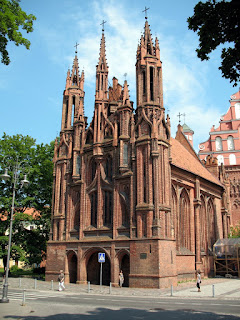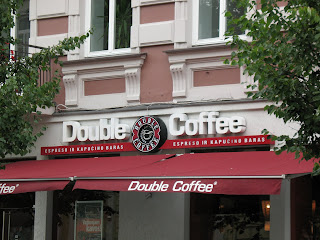



Tallinn's compact and charming old town still has parts of the ancient city walls, complete with red-roofed fortress towers. Here I am climbing to the top of Kiek en de Kok (Peek in the Kitchen), so named because the soldiers could see into the kitchens of the houses below. It's the tower on the right in the first photo.
Tallinn has become quite the tourist destination and, as a result, the old town is full of souvenir shops and expensive restaurants. But you can still take long walks enjoying the architecture and have tea and truffles in the chocolate shops and cafes. It turns out Estonia is known for its chocolate. This is my kind of country!

































